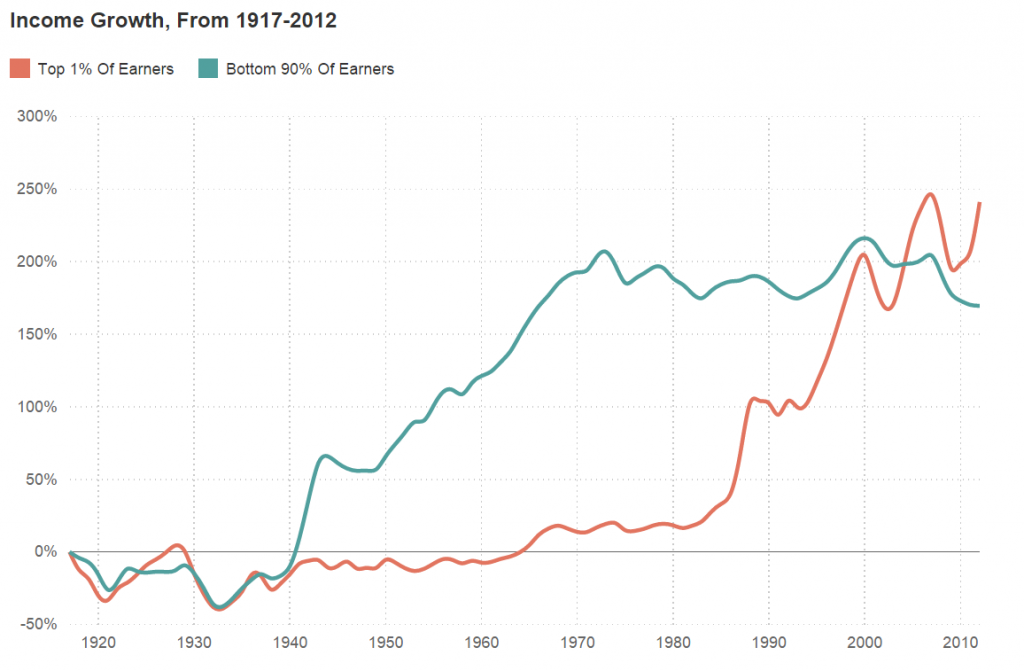Description: This graph depicts income growth from 1917 to 2012. The author made sure to correlate his information with the chart above. By having his information correspond to the graph, the reader is then better able to understand the multiple trends in the graph above. Notably, an interesting trend can be seen from the graph above, from 1980 to 2010 income growth for the top 1 percent dramatically increased. On the other hand, from 1980 to 2010 income growth for the 90 percent has disturbingly stagnated.
Summary: In the article, “The Fall And Rise of U.S. Inequality, In 2 graphs,” Quoctrung Bui, the author, goes into detail about inequality in the United States. According to the author, a phase called the great compression was a time when incomes rose for the bottom 90 percent. On the other hand, also during the great compression, the 1 percent of earners experienced a stagnant income growth. The author then explained how during these past 35 years “marginal tax rates” fell, resulting in an income rise for the top 1 percent. Notably, also occurring during these past 35 years, the author said, “…a combination of global competition, automation, and declining union membership, among other factors, led to stagnant wages for most workers. “





